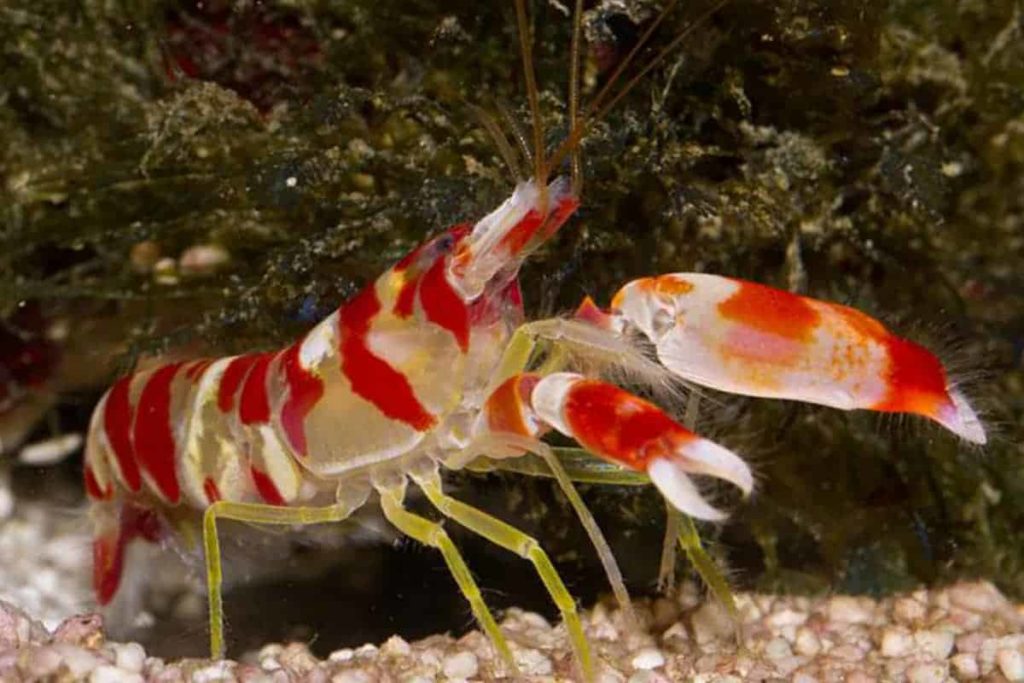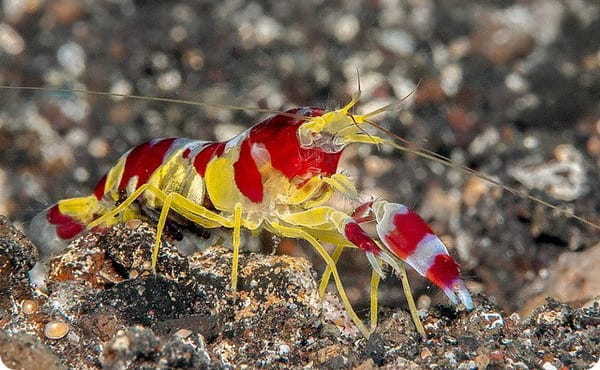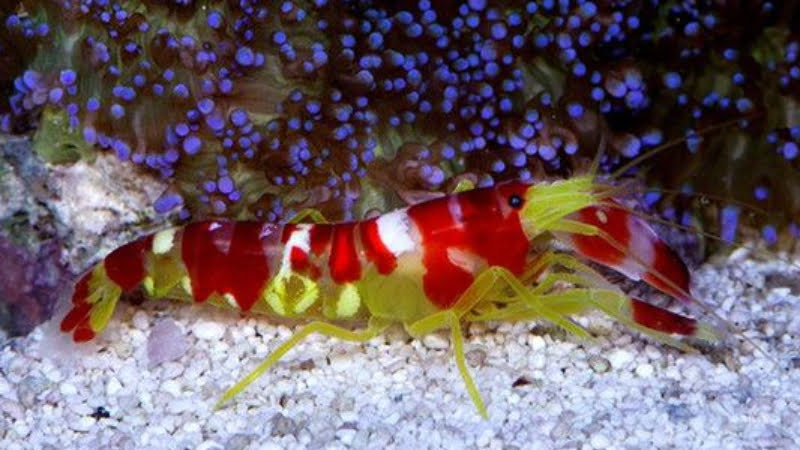Are pistol shrimp reef safe? This is a question that many people ask themselves when deciding what type of marine life to purchase for their saltwater aquarium. Pistol shrimp are often seen as aggressive and dangerous animals, but this couldn’t be further from the truth!
In this blog post, we will discuss whether or not pistol shrimp are reef safe to help you decide which species of marine life to buy for your saltwater aquarium.
See also:
- What Is Peppermint Shrimp Lifespan? – Ultimate Care Guide.
- Is Blood Shrimp Reef Safe? Suprised Facts about Blood Shrimp.
The Facts About Pistol Shrimp
It is their symbiosis with shrimp gobies (more on that in a moment), as well as their use of a claw as a weapon that makes Pistol shrimp perennially exciting invertebrate.
Every shrimp and crab uses its front claw as a weapon. However, this is different. Shrimps such as these use their claws to destroy each other with ease. If its prey comes close, the pistol shrimp “loads” its claw and shoots a bubble bullet that can be heard outside your aquarium and stuns its target.

It doesn’t take much imagination to imagine where this crustacean gets its common names. The snapper shrimp is sometimes referred to as a Snapper. Would you like to hear what it sounds like in a home aquarium? Here’s a video you should check out. The video shows a pistol shrimp in super-slow motion. You can hear the clicks and see the ‘smoke’ from the gun at high zoom.
- Known as: Pistol shrimp, snapping shrimp, alpheid shrimp
- Name Alpheus spp., possibly Alpheus Bellulus
- Coral reef safety: Adequate for corals, not for small prey (small fish and invertebrates).
- Diet: meaty foods (carnivorous), predator–uses a pistol to stun prey
- Level of care: Easy/suitable for beginners
- Attributes: interesting symbiotic relationship with shrimp gobies, excellent to observe
- Warning: keep an eye on nitrate levels and never add copper to a tank
Are Pistol Shrimp Reef Safe?
As far as picking on corals or destroying zoo colonies is concerned, there is no need for you to worry. In this sense, pistol shrimp is safe for reef tanks since they do not eat corals.
The study found that the Pistol shrimp Synalpheus nemesis, living on corals of the genus Dendronephthya, may protect its host from two different nudibranchs that feed on soft coral Polyps. Coral crabs and pistol shrimps living on stony corals display similar protective behaviour.
Nevertheless, there are other potential problems you should be aware of:
- It is common for pistol shrimp to steal frags and move them around. In addition, they use them to build their burrows. The main problem you might have with your reef tank is plucking coral frags off the rocks.
- Another complaint is burrowing sandstorms. The little bulldozers are like little bulldozers. Because pistol shrimp never stop tunneling, they constantly move gravel and sand. The excavated sand can damage corals, so place your corals at least 8 inches (20 cm) above the sand.
Breeding Pistol Shrimp
Female shrimp molt in conjunction with the reproduction cycle of this species. Monogamy allows them to retain the same mate after initial population growth.
Following molting, females tend to become receptive to sexual activity. Chemical signals and snapped claws used by unpaired individuals indicate that they are ready to mate.
Both shrimps (male and female) form a pair and mate during the female’s molt cycle. During this time, the male will protect the female while she molts (sheds her exoskeleton).
Males gain access to multiple mating opportunities while females gain relief from the need to look for mates during their vulnerable molting period. Depending on the species, females can lay anywhere from a few hundred to several thousand eggs per brood. Eggs will remain in the egg for approximately four weeks (28 days) after fertilization.

In addition, larval development usually occurs over three stages separated by molts.
- The first stage lasts 1-2 hours, during which the organism enlarges. A few shrimps hatch at a size large enough to begin the second larval stage, thus skipping the first larval stage.
- During the second larval stage, the eyes and appendages and develop further. At this stage, the larva will survive on the nutrients in the yolk until it forms functional mouthparts for feeding.
- A shrimp enters the third stage after 2-3 days, after which it advances to the adult stage.
FAQs
Will a pistol shrimp kill my fish?
Nothing in my mind could have reasonably done that damage besides the shrimp; pistol shrimp can 100% attack and kill fish. If you’ve ever seen videos of them stunning fish in the wild, it’s doable and highly probable.
Is a tiger pistol shrimp reef safe?
They are best kept with reef-safe fish. Feeding: Offer the Tiger Pistol Shrimp small pieces of meaty foods. Growth: Maintaining proper pH, Ca, Alk, & Mg levels is essential for shrimp.
Can a pistol shrimp kill a human?
Yes, it could if the human is allergic to shrimp, consumes one, and suffers from anaphylaxis shock. Otherwise, you can also die from choking on one.
Conclusion
They are pistol shrimp reef safe well known for their interesting adaptations, which include snapping claws and a powerful harpoon. They are also known for their ability to slam shut with enough force to create cavitations that stun nearby fish and can even kill them. These fascinating creatures are some of the most popular invertebrates found in saltwater aquariums around the world!

Annette M. Chaney is an experienced marine biologist with over 20 years of experience as an aquarist and fishkeeper. She started her first aquarium at a young age, filling it with frogs and goldfish obtained from the ten-cent pet store.
Annette grew up caring for and breeding African Cichlids, which led to a hobby in high school that doubled as a profitable means. Attending Reed College gave her time to solidify herself as an accomplished aquarium caretaker with an eye for sales. After that, from 2009 – 2013, she studied at Roger Williams University – one of the most prestigious universities for Aquaculture and Aquarium in USA. She is the founder of AquariumCircle since 2010.
